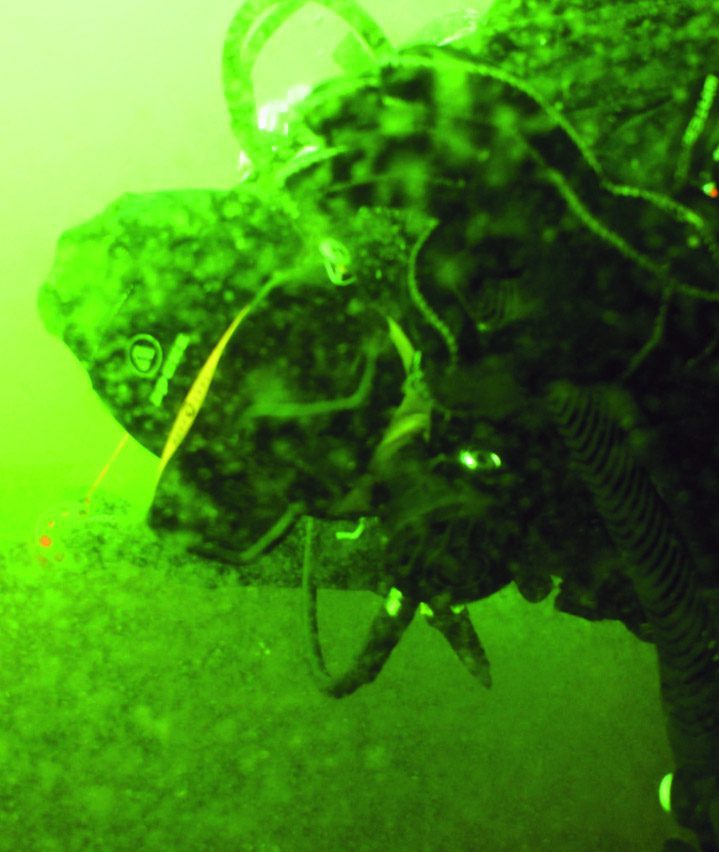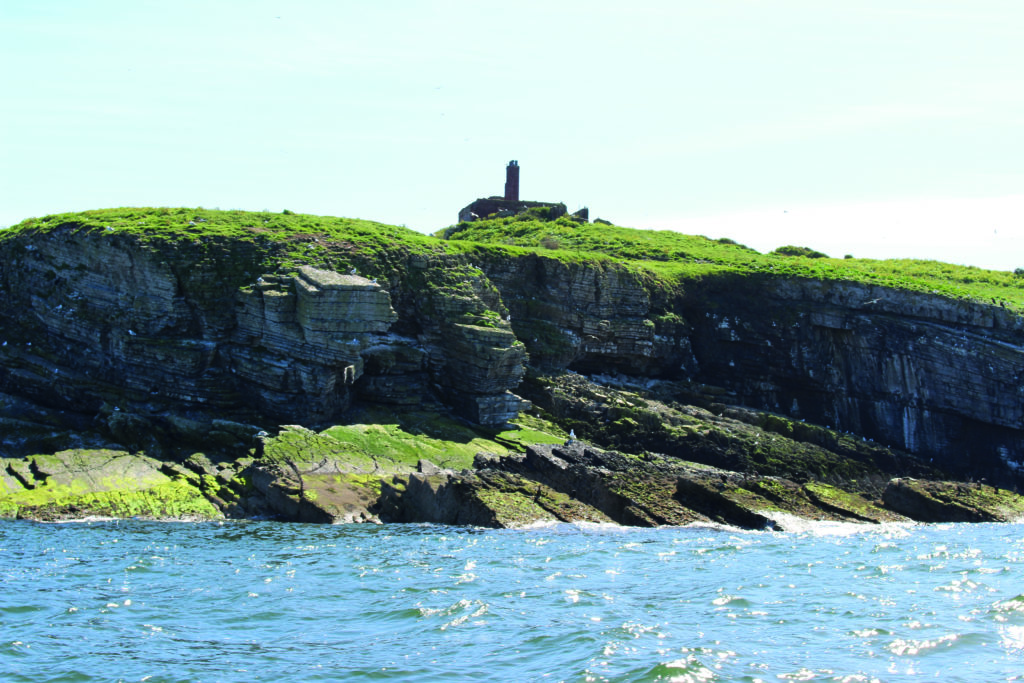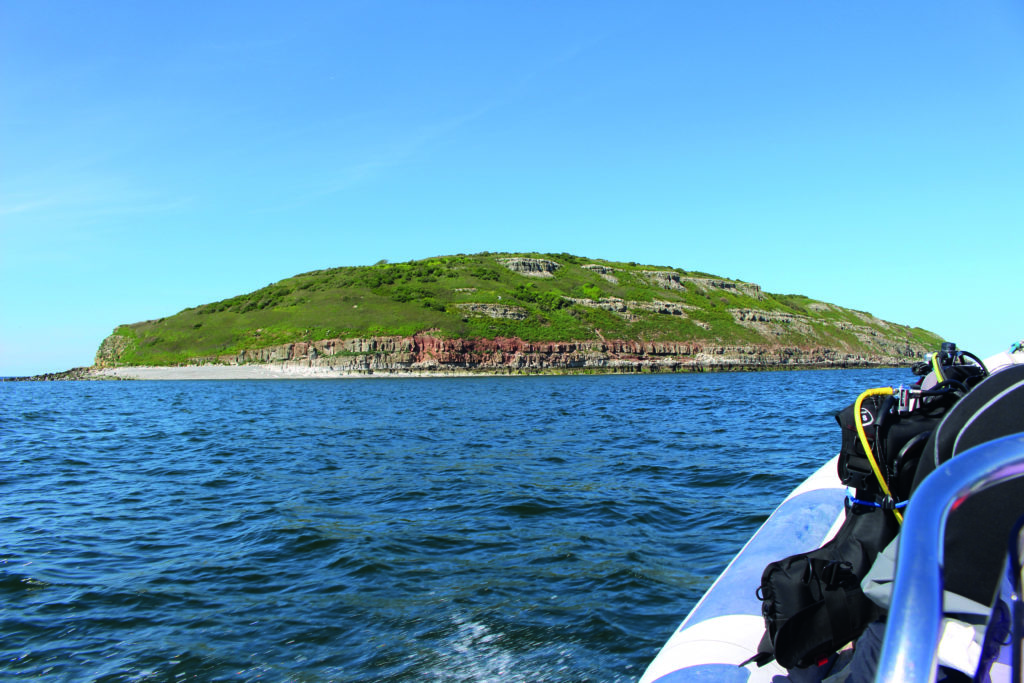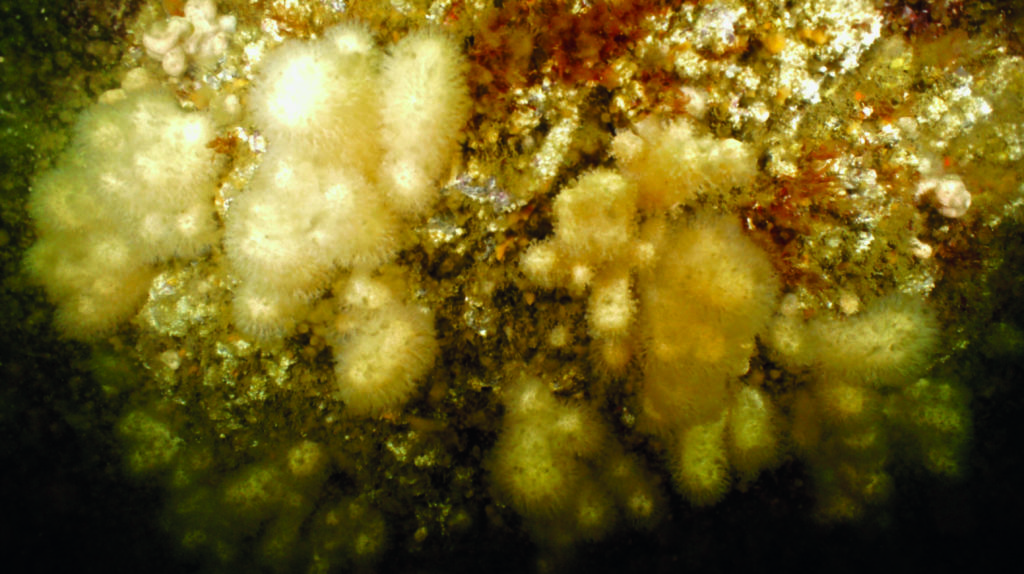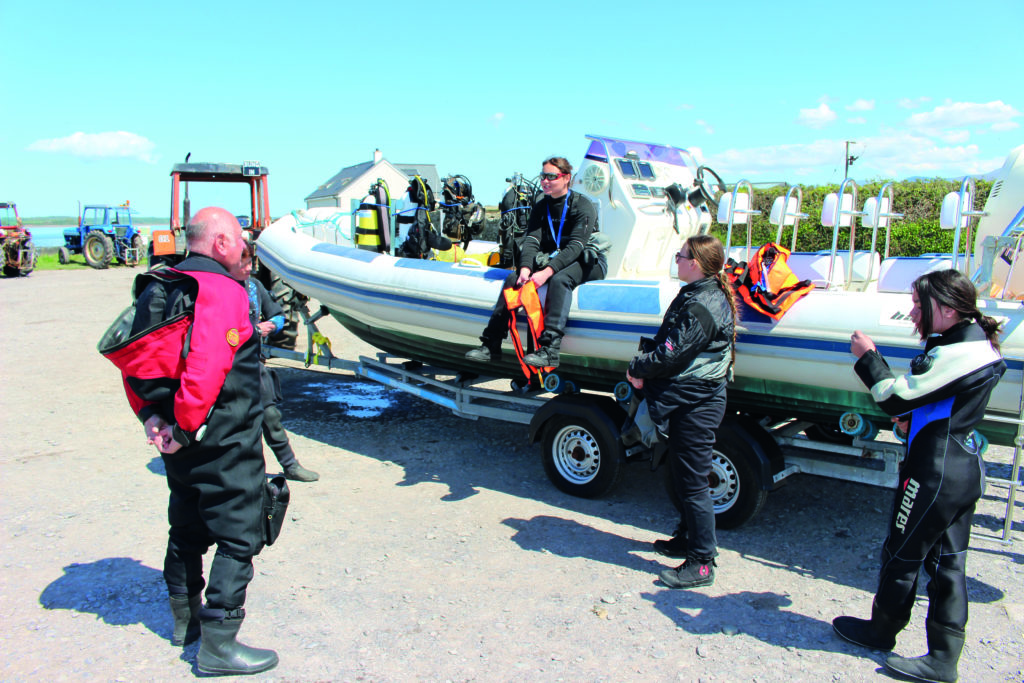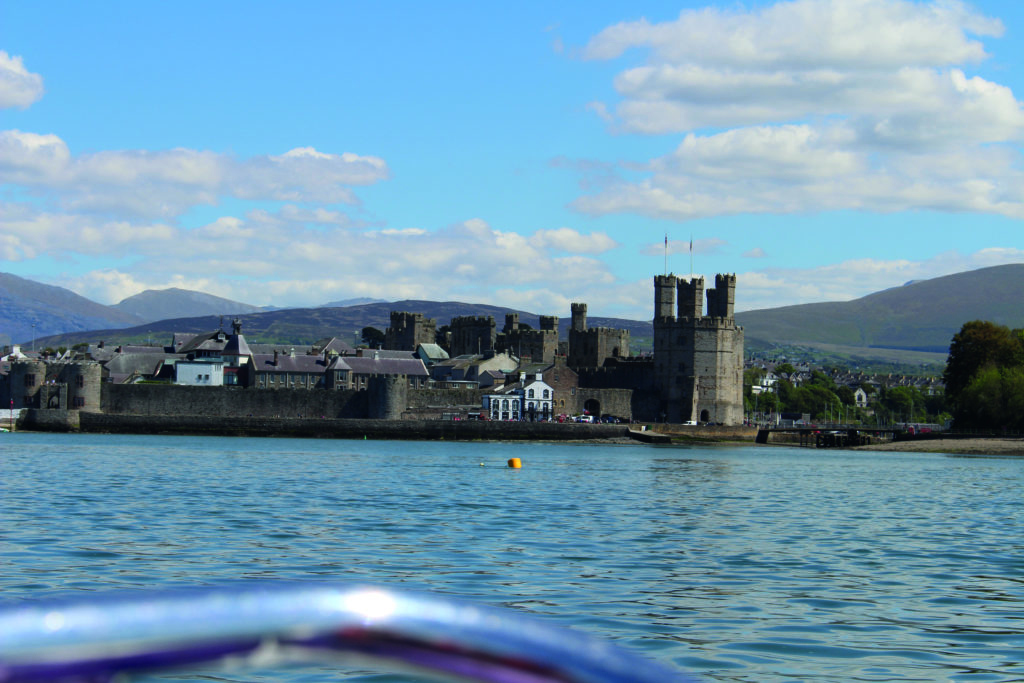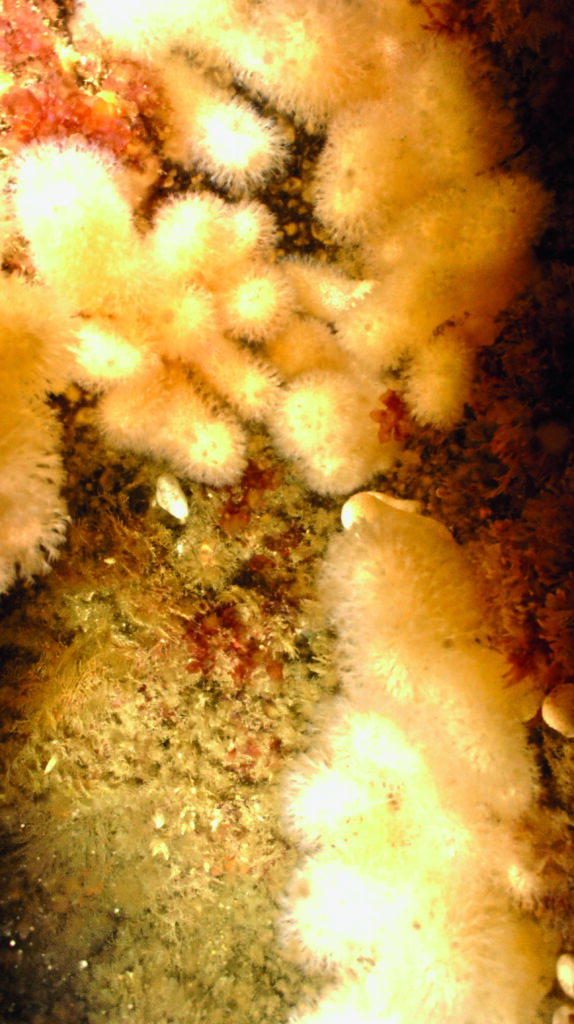MARK EVANS stayed close to home and ventured to Puffin Island off the North Wales coast with Duttons Divers / Vivian Dive Centre, with an eye to diving with the resident seals. However, things didn’t quite go to plan…
The entire water column in front of me – well, the metre or so I could actually see – was pulsating with life. Countless planktonic critters were making the most of the warm, sunny weather, and had “bloomed” into active life, which was great for them, but not so good for our hardy band of divers.
We were off the back end of Puffin Island in Anglesey, hoping to explore the craggy, rocky reef beneath the surface, and maybe encounter a friendly seal or two, but at the moment I had all my attention simply on keeping track of where my buddy was!
Topside conditions could not have been more perfect – blue skies, warm sunshine and low wind – but under water was a write-off. We canned the dive after 30 minutes or so of comedic navigation through a primordial soup. Welcome to the world of British diving, where you just don’t know what you are going to get!
Diving Puffin Island
Puffin Island, or Ynys Seiriol in Welsh, is an uninhabited island lying off the eastern tip of Anglesey, an island itself off the north-west coast of Wales. When you’re driving along the A55 dual-carriageway and look across towards Anglesey and see Puffin it doesn’t look that big, but when you’re next to it on a RIB-ride it’s quite impressive, with the highest point being some 59m above sea level.
Ynys Seiriol refers to St Seiriol, son of Owain Ddantgwyn, a 5th-century ruler of the kingdom of Gwynedd. He initially founded a clas, or ecclesiastical settlement, at Penmon (the area of Anglesey facing Puffin Island), before in later life establishing a hermitage on the island. His remains are still thought to rest there.
The remains of several buildings are visible on the island, including a 12th-century monastery, which has a Grade I heritage listing, and a 19th-century cottage. There is also a disused telegraph station on the north-eastern tip of the island.
It is now privately owned by the Baron Hill estate, and is a Special Protection Area for wildlife, in particular its great cormorant colony of some 750 birds, which accounts for more than 10% of the national population.
Atlantic puffins – from which the island gained its English name – were once prolific, with more than 2,000 pairs recorded, but after brown rats were accidentally introduced to the island in the late-19th century, they were virtually wiped out.
A campaign to eradicate the rats through poisoning began in 1988, and seems to have worked – there are now some 300 puffins breeding on the island.
Arriving at Puffin Island
To dive Puffin Island, you need to be in a boat. You can launch from somewhere along the northern coast of Anglesey, or down the Menai Straits. Duttons Divers / Vivian Dive Centre goes out in its 7.8m Ballistic dive RIB Little Viv from Ty Calch, at the very southern end of the Menai Strait, looking out at the narrow Caernarfon Bar, a treacherous navigation hazard leading out into Caernarfon Bay.
This means that to get to the island, you’re treated to a picturesque run up the extremely scenic Strait, past Caernarfon Castle and National Trust property Plas Newydd, under the Britannia Bridge and Menai Suspension Bridge, and then past Bangor Pier and Beaumaris with its castle, before eventually getting to Puffin Island. Later you get the reverse journey back.
The weather was amazing when we went out in early May, and the blue skies and warm sunshine made for a comfortable, enjoyable cruise up and down the strait. Several companies do specific RIB cruises in these impressive waters, so essentially you get a free RIB-ride built into your diving day on Little Viv!
The dive
There are numerous sites around Puffin Island, but our plan was to dive with some of the friendly grey seals that call the island and its waters home. They can be encountered all around the island, but the northern side is generally the optimum spot for interactions, so this was our target drop from the RIB.
Here the reef can drop to 12m-15m in places, and is liberally covered in thick coatings of dead men’s fingers and healthy kelp.
We rolled in close to the wall, into 2-3m of water, and at that point we all realised just how plankton-filled it was! We stuck with the plan, even though we knew the chances of seeing any seals was about nil. We saw them on the surface as we drove by in the RIB, and I’m sure they were laughing to one another about these daft bubble-blowers coming to see them in lousy vis!
We ventured down to 10-11m maximum and, by getting very close to the reef, I managed to get nearly 1m or so of visibility. The dead men’s fingers that filled every gully and cut were impressive, and there were sea stars everywhere, bigger than my hand. I also found a solitary lobster poking out from under a ledge, and a few large edible crabs going about their business between the kelp stems.
It was a shame that the visibility caused us to abort the dive sooner than the hour planned, but this brief visit was enough to persuade me that a return visit should be on the cards, because the reef in decent vis could be spectacular.
Photographs by Mark Evans and Steve Barnard
Also on Divernet: Exploring The Hera Wreck, Diving In the Menai Strait, Wrecks Of Churchill Barrier II, Diving The Royal Adelaide
